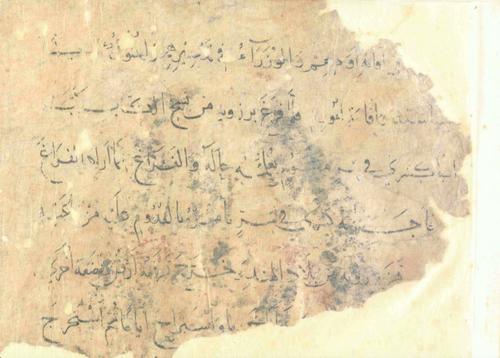Digital Reconstruction
Khouloud Khalfallah
The manuscript Rabat MM 3655 is one of many treasures of the Royal Library of Morocco. It has been dated by Bernard O'Kane (Early Persian Painting, London 2013) to the second part of the thirteenth century (between 1265 and 1280), which makes it one of the oldest codices of Kalīla and Dimna.
In its preserved state, the manuscript contains 113 folios, some of them fragmentary, and a large number of illustrations in the Persian style. According to O'Kane, "it is the most heavily illustrated of all the surviving Arabic manuscripts." At the same time, it represents one of the few specimens that belong entirely to the classical Arabic linguistic register, as it lacks those Middle Arabic features that pervade most manuscripts of Kalīla and Dimna to a varying degree.
The folios have been assembled into the modern green leather binding but not in the original semantic sequence, which could be the result of arbitrary order of the unbound folios. Moreover, a number of folios are damaged and many are missing, among them the Arabic preface of Ibn al-Muqaffa' and the two final chapters of the work (The Traveller and Goldsmith and The King’s Son and his Companions). Other chapters are lacking folios, and only three of them are complete (The Kingfishers and the Whimbrel, The Lioness and the Horseman, and The Ascetic and His Guest).
Because of the importance of this manuscript, a digital reconstruction of its order was necessary. This was made possible through the discovery of a verbatim copy, MS Paris BnF arabe 3475, copied by ʿAbd al-Raʾūf al-Ṣanğalfī in the second part of the eighteenth century (1761), probably in Egypt. The latter specimen belongs to a small number of manuscripts that are verbatim copies of others, whereas the majority of those so far inspected are close to others but exhibit more or less reformulation, cuts, or additions.
Paris arabe 3475 is a completely preserved manuscript of Kalīla and Dimna, containing 199 folios with 180 illustrations in addition to 60 unfilled blanks left for illustrations. Where present, the illustrations are executed in a simple manner without much detail but with a lively color scheme.
On the basis of Paris arabe 3475, the order of folios of Rabat MM 3655 could be digitally reordered, and the text of some damaged folios reconstructed. During this process, the narrative segments of Rabat MM 3655 could be matched without fail to those of Paris arabe 3475. The same applied to the image cycle, which is very similar in both, i.e., images with identical motifs appear within the same or adjacent narrative segments. However, those in the older manuscript are carefully drawn and highly detailed, while those in the younger copy are limited to simple contours filled in with color, and towards the end, numerous blanks are left without images. Though artistically less ambitious, the existence of Paris arabe is invaluable for enabling the restoration of Rabat MM 3655 and giving an impression of its overall structure.


